Introduction
Have you ever had an inner voice tell you, “I’m not good enough,” or “I’ll probably fail”? That voice is your inner critic, and learning how to silence your inner critic is key to building confidence and peace of mind.
Also read: How to Stop Overthinking and Start Living Fearlessly
It feeds on fear, uncertainty, and past failures—but the good news is, you can silence your inner critic.
This guide will show you how to stop self-defeating thoughts, build lasting self-belief, and take control of your confidence.
What Is Your Inner Critic?
There is that voice in everyone’s head that is constantly criticizing them. It makes us feel inadequate, makes us question our actions, and brings to mind past mistakes. That’s the inner critic. It doesn’t help; it just makes things harder.
That voice in your head isn’t always telling the truth—it’s usually shaped by your fears, past experiences, and self-doubt. If you don’t keep it in check, it can quietly chip away at your confidence, hold you back, and stop you from really enjoying life. But once you understand where it comes from and how it works, you can start taking your confidence back.
- The Voice in Your Mind
That pessimistic inner voice is your inner critic. It’s the voice that questions your every move, mocks your decisions, and magnifies your flaws.
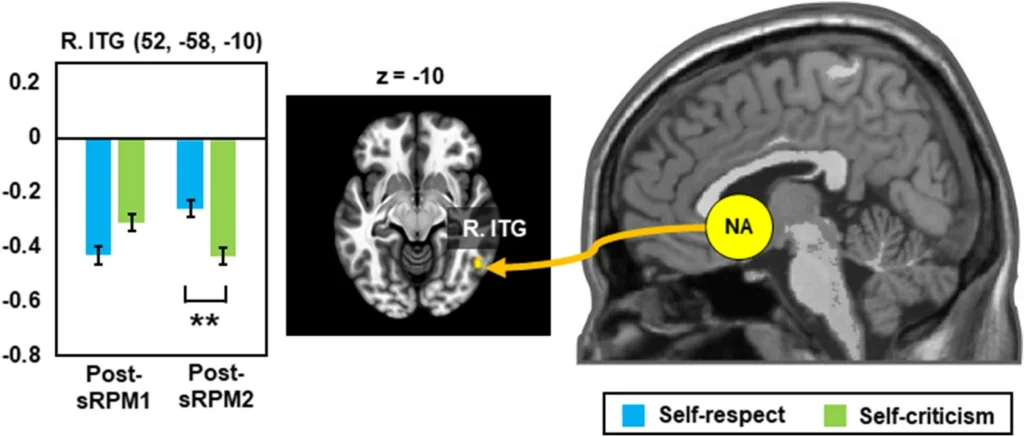
- Origins of Self-Doubt
Most of the time, your inner critic develops early in life—maybe from criticism, comparison, or failure. It clings on, thinking it’s protecting you, but ends up doing more harm than good.
- How It Impacts Your Confidence
Listening too often chips away at your self-worth. It keeps you from trying, from dreaming, and from taking risks. Over time, you begin to lose faith in your abilities.
Indications That Your Inner Critic Is Being Heard Too Much
Are you unsure whether your inner critic is in charge? There are unmistakable indicators that this voice is controlling your thoughts and behavior excessively.
Your inner critic may be in charge if you are always doubting yourself, feel paralyzed by fear, or avoid taking on new challenges. Let’s examine some typical occurrences of this critical voice in day-to-day interactions.

- Negative Self-Talk
Red flags include statements like “I can’t do this,” “I always mess things up,” and “I’m such a failure.”
- Fear of Not Getting It Right
You avoid new opportunities because you’re afraid you’ll fail—or worse, people will see you fail.
- Over-Apologizing and Perfectionism
Constantly saying sorry or striving for perfection is often your inner critic disguised in polite behavior.
The Science Behind the Inner Critic
Your inner critic isn’t just some random voice—it’s actually tied to how your brain reacts to fear, past experiences, and the way you talk to yourself. Once you understand what’s really going on, you’ll see that those negative thoughts aren’t facts—they’re just patterns your brain has gotten used to. The good news? With a little awareness and practice, you can start to change those patterns.
- Self-Talk Psychology
According to psychologists, our self-talk affects our emotions and behavior. While positive self-talk increases resilience, negative self-talk exacerbates anxiety.
- The Brain’s Function in Doubt and Fear
The amygdala, the brain’s alarm system, often exaggerates uncertain situations and makes them feel more threatening than they are.
According to Harvard Health, this part of the brain plays a key role in triggering fear—even when no real danger exists.
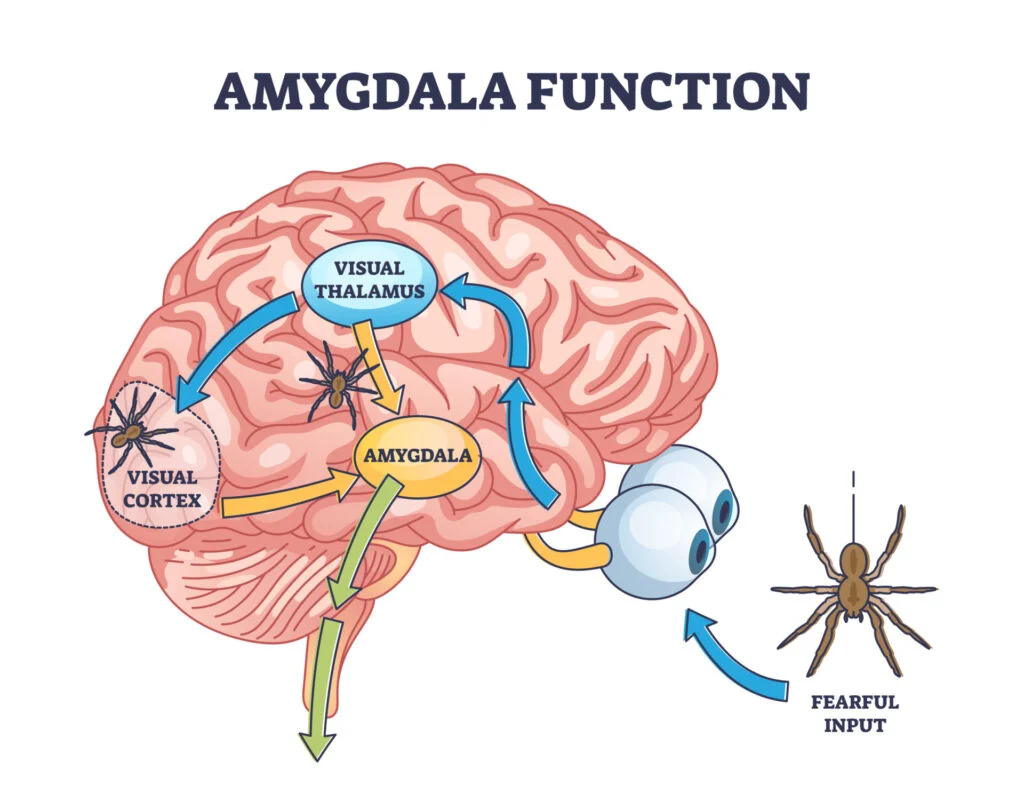
How to Recognize Your Inner Critic in Daily Life?
Awareness is your first line of defense. Before you can silence your inner critic, you need to recognize when it’s speaking.
The inner critic often sounds like your own voice, making it tricky to spot. But with a few simple practices, you can catch it in action—and begin to take back control of your thoughts.
Once you know how to spot it, the next step is learning how to stop overthinking and start living fearlessly to quiet your inner critic.
Proven Ways to Quiet Your Inner Critic
- Keeping a Journal of Your Thoughts
When you’re feeling anxious, start by writing down your thoughts. You’ll start to see negative trends.
- Bringing Your Patterns to Light
Does your critic get triggered by particular people or circumstances? The first step to change is awareness.
- Identifying the Voice
Name it something goofy like “Doubtful Dan” or “Naggy Nora.” This helps you deal with it by separating it from who you are.
With practice, this awareness will make it easier to silence your inner critic when it tries to speak again.
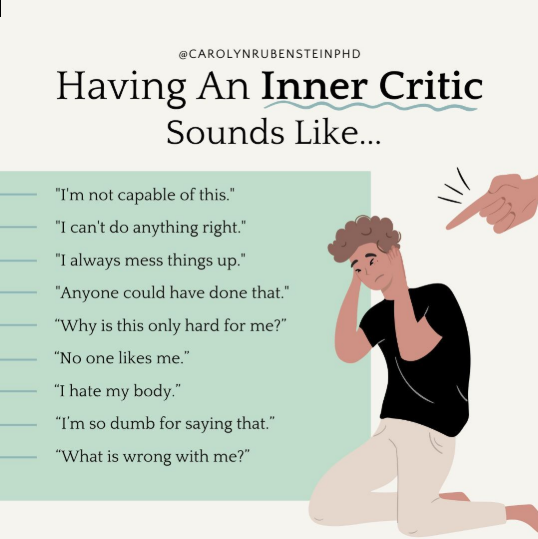
Proven Ways to Quiet Your Inner Critic
The next step after identifying your inner critic is to figure out how to silence your inner critic and stop letting it control your thoughts. The good news is that there are tried-and-true methods that can help you change your perspective, reframe unfavorable ideas, and discover inner peace. Even minor adjustments to your self-talk can have a significant impact over time, but it takes practice.
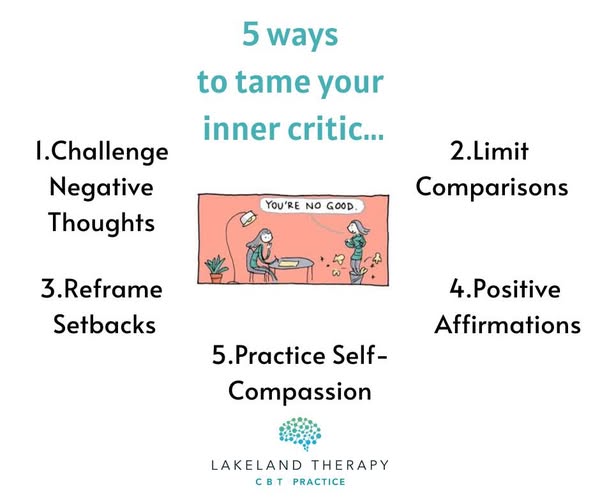
- Meditation and Mindfulness
You can distinguish between what is noise and what is real when your mind is at ease. Research from Mayo Clinic shows that regular mindfulness meditation reduces stress, improves emotional health, and helps you manage negative thinking.
- Make use of constructive affirmations.
Affirmations such as “I am capable” or “I deserve success” are not cliches; rather, they are scientifically supported forms of positive self-brainwashing. According to Healthline, repeating positive affirmations regularly can help reduce negative thoughts, improve mood, and increase self-confidence over time.
- Reframe Negative Thoughts
Change “I’m a failure” to “I’m still learning.” A slight twist can completely alter your perspective.
- Use Body Language to Shift Mindset
Your critic is not as loud as your body. Pull your shoulders back, lift your head high, and embody confidence until it becomes real.
Step-by-Step Guide to Building Self-Belief
Building a solid foundation of self-belief is the other half of the journey; squelching your inner critic is only half of it.
Although it takes time, you can start to feel more confident in your actions, trust yourself more, and stop allowing doubt to hold you back by taking small, regular steps.
Here’s how to begin developing genuine, long-lasting confidence from within.
- Establish Small, Doable Objectives
Begin small—one task, one victory. Brick by brick, confidence grows.
- Honor Your Victories
No victory is too minor. Have you completed your workout? Had a successful meeting? Give yourself a treat!
- Accept Progress Rather Than Perfection
You’re not a robot. You’re human. Progress over perfection—always.
Train Your Brain for Confidence
Even with the right mindset, it’s hard to grow if you’re stuck in an environment that constantly drags you down. The people around you and the space you’re in have a big impact on your energy, your thoughts, and how you see yourself. But when you’re in a supportive environment, it becomes a lot easier to quiet that inner critic and start believing in yourself again—naturally.
- Neuroplasticity and Belief Building
Your brain rewires with repetition. The more you tell yourself you’re enough, the more you start to believe it.

- Visualizing Your Best Self
Imagine the confident version of you. How do they walk, talk, and work? Start acting like them.
How to Build a Supportive Environment for Self-Belief
- Be in the company of positive people.
Energy spreads easily. Choose to spend time with people who inspire and energize you rather than those who constantly bring you down.
- Keep Yourself Away from Dangerous People
There’s nothing wrong with stepping away from people who make you question your worth. Keep your peace.
Confidence Rituals You Can Practice Every Day
Confidence develops gradually, one step at a time, rather than all at once—and each habit helps you silence your inner critic little by little. These everyday habits not only build consistency but help you silence your inner critic little by little. It starts with the little things, like taking care of yourself, honoring your own commitments, and being there even when things are difficult. These things may not seem significant at first, but they have the power to significantly alter your self-perception over time.
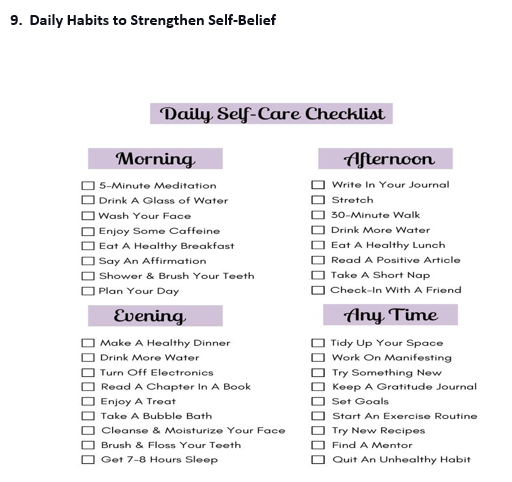
- Morning Customs
Have a positive start to the day. Stretching, affirmations, or even a dance party.
- Posing with Power
For two minutes, stand like a superhero. Science says it works.
According to Amy Cuddy’s TED Talk, this “power pose” can boost confidence and lower stress by influencing hormone levels in the body.
- Gratitude Journaling
Write 3 things you’re grateful for daily. It shifts focus from lack to abundance. According to Greater Good Science Center, keeping a gratitude journal can increase happiness, improve sleep, and strengthen resilience.
How to Respond When Your Inner Critic Resurfaces
Your inner critic may still come out despite all of your progress, particularly when you’re under pressure, failing, or making important decisions.
That is quite typical. The objective is to react differently when it speaks, not to permanently silence it.
The next time that voice tries to take over, follow these steps.
- It’s Human, Don’t Panic
Everybody has days off. The critic doesn’t have to shout, but it can whisper.
- Utilize Your Resources Right Away
Make use of your affirmations. Take a proud stance. Reframe your ideas. You’re capable.
- Speak with a coach or therapist.
It’s acceptable when the critic is too loud to manage alone. Seek assistance.
Real People, Real Wins: Stories of Beating Self-Doubt
On this journey, you are not alone. Many successful people have struggled with the same inner doubts that you are currently dealing with.
These tales, which feature both common people and well-known figures, serve as a powerful reminder that it is possible to silence your inner critic and create real change.
Allow these instances to encourage you to think, “If they can do it, so can I.”
- Well-known Individuals Who Overcame Self-Doubt
Oprah was told she wasn’t cut out for television. Twelve publishers rejected J.K. Rowling. They brushed it off—and now, just look at where life has taken them.
- Ordinary People, Significant Changes
Thousands of people, including students and stay-at-home mothers, have learned to silence their critics. Why don’t you?
Body Language That Encourages Self-Belief
- Be erect and communicate clearly.
Posture is about pride as much as it is about the spine. Talk with purpose.
- Keep your eyes open and smile.
It communicates to the world, “I belong here.” You’ll believe it too soon.
- Mirror-Confident Individuals
Look at people you respect. Reflect their bold, serene energy.
Resources and Tools to Assist You
● Books
“The Gifts of Imperfection” – Brené Brown
“The Confidence Code” – Katty Kay & Claire Shipman
● Apps
Headspace (meditation)
I Am (daily affirmations)
● Support Groups
Facebook communities, therapy forums, and local workshops.
Your Confidence Begins Now
It takes time to quiet your inner critic, but every time you do, you’re reclaiming control. Remember: that harsh voice in your head is not the author of your life — you are. Speak to yourself with kindness. Walk with purpose. And trust that the confident, capable version of you is already inside — you’re just learning to let them lead.
It all starts when you choose to silence your inner critic and step into your truth.
Every step you take today helps you silence your inner critic, rebuild trust in yourself, and strengthen your inner belief.
Believe in yourself. Because you can.
FAQs
Q1: How much time does it take to quiet your inner critic?
A: Although there isn’t a set timeframe, many people experience changes within a few weeks with regular practice and mindset work.
Q2: Is it typical for me to occasionally still hear my inner critic?
A: Definitely. The objective is to learn how to control and lessen its impact rather than to eradicate it entirely.
Q3: Does confidence actually get affected by body language?
A: Indeed! According to studies, adopting a confident posture can actually lower cortisol levels and boost feelings of self-worth.
Q4: How can I quickly stop talking negatively to myself?
A: Say something positive right away, stand up straight, take deep breaths, and use affirmations.
Q5: Should I seek therapy for deep-rooted self-doubt?
A: Yes—professional help can be transformative and provides tools that are tailored to your journey.
